Spend any time on pen blogs and forums and you’ll find someone mention “Nakaya” and “grail pen” in the same sentence. There’s something about this Japanese brand that really gets people by the soul and won’t let go, in a way that Sailor and Pilot don’t.
Maybe it’s the mystique around the brand itself: staffed by a small cadre of ageing retirees from Platinum, brought back to the workbench by their love of the craft.
Maybe it’s because these artisans work almost exclusively in Urushi lacquer and other exotic traditional Japanese finishes, which only a handful of companies use due to the time, skill and cost involved.
Perhaps its the relatively limited availability of Nakayas new, and the fact that the company offers no budget models at all. To compound that, precious few appear on the second-hand market.
Or it could be the appeal of truly old-school service, which promises to customise the writing feel of the pen to fit you (the company’s slogan is FOR YOUR HAND ONLY).
I think there’s also a degree of mystique brought on, at least in the west, by the company’s surprisingly complex portfolio. Learning to navigate what all the different urushi finishes mean, the various models and sizes, makes you feel part of an exclusive club (“ah, I see you have a Decapod Twist Cigar in Aka-Tamenuri, fine choice, sir”).
And that’s added to by the fact that the pens have no branding beyond the name on the nib: they’re rare in the wild, but they’re certainly not advertising their logo out there, and very few people will recognise your Nakaya even if you stick it under their nose — it’s a stealth badge of taste.
For some combination of these reasons, I know that I wanted a Nakaya for a long time. This might seem odd to those of you who know I mainly favour heavy, large, wet-writing Italian and German pens.
Last year I bought a Nakaya Decapod Writer Heki-Tamenuri. Decapod means it’s a ten-sided design, very distinctive and a great model for showing off the urushi layers. Urushi is rich, deep and glossy, and it’s captivating in person.
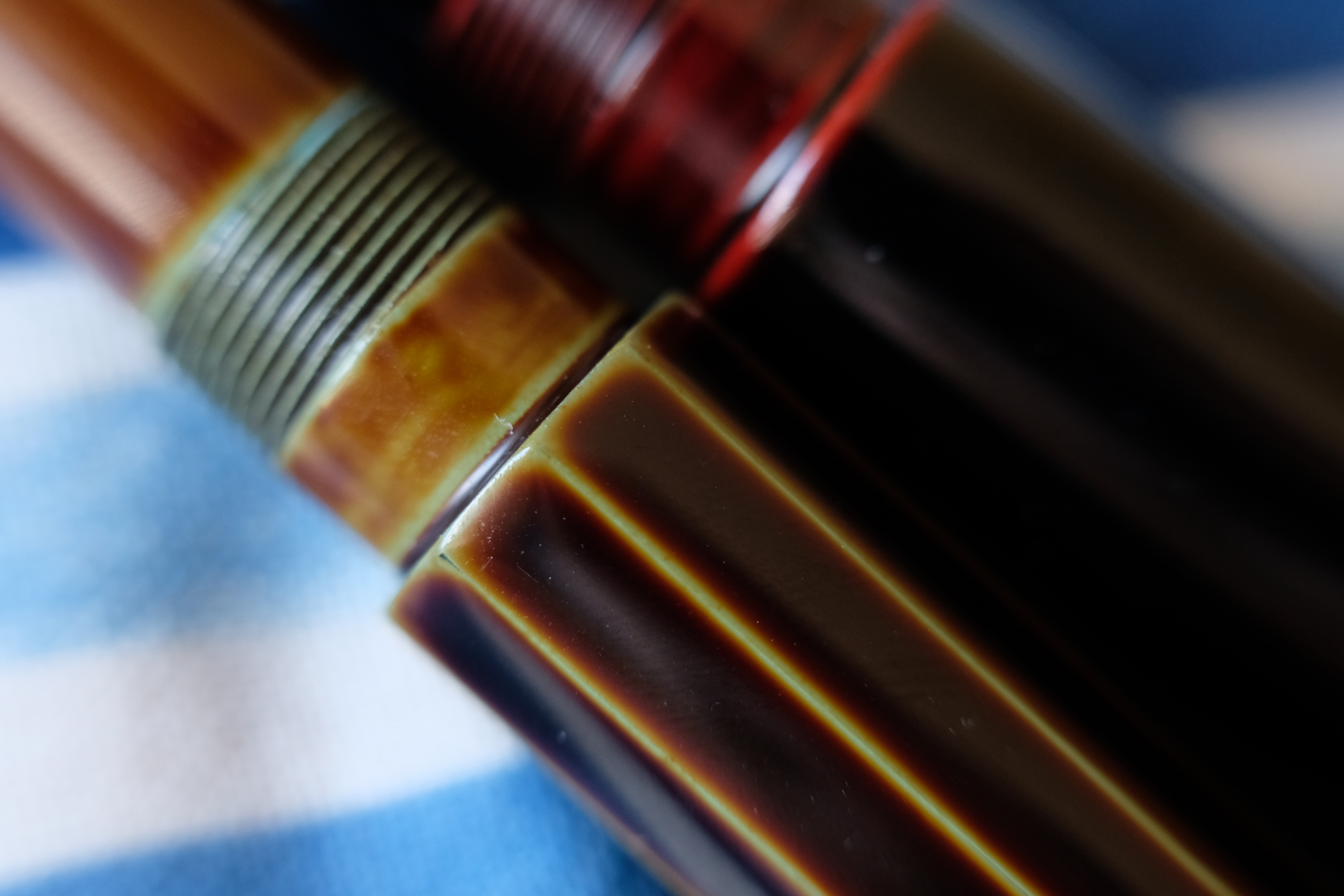
Writer means it has a clip (gold). Heki-Tamenuri means it’s a brown/green finish. Mine has a bi-colour 14k nib, ground to a fine cursive italic from a broad, by nibs.com.
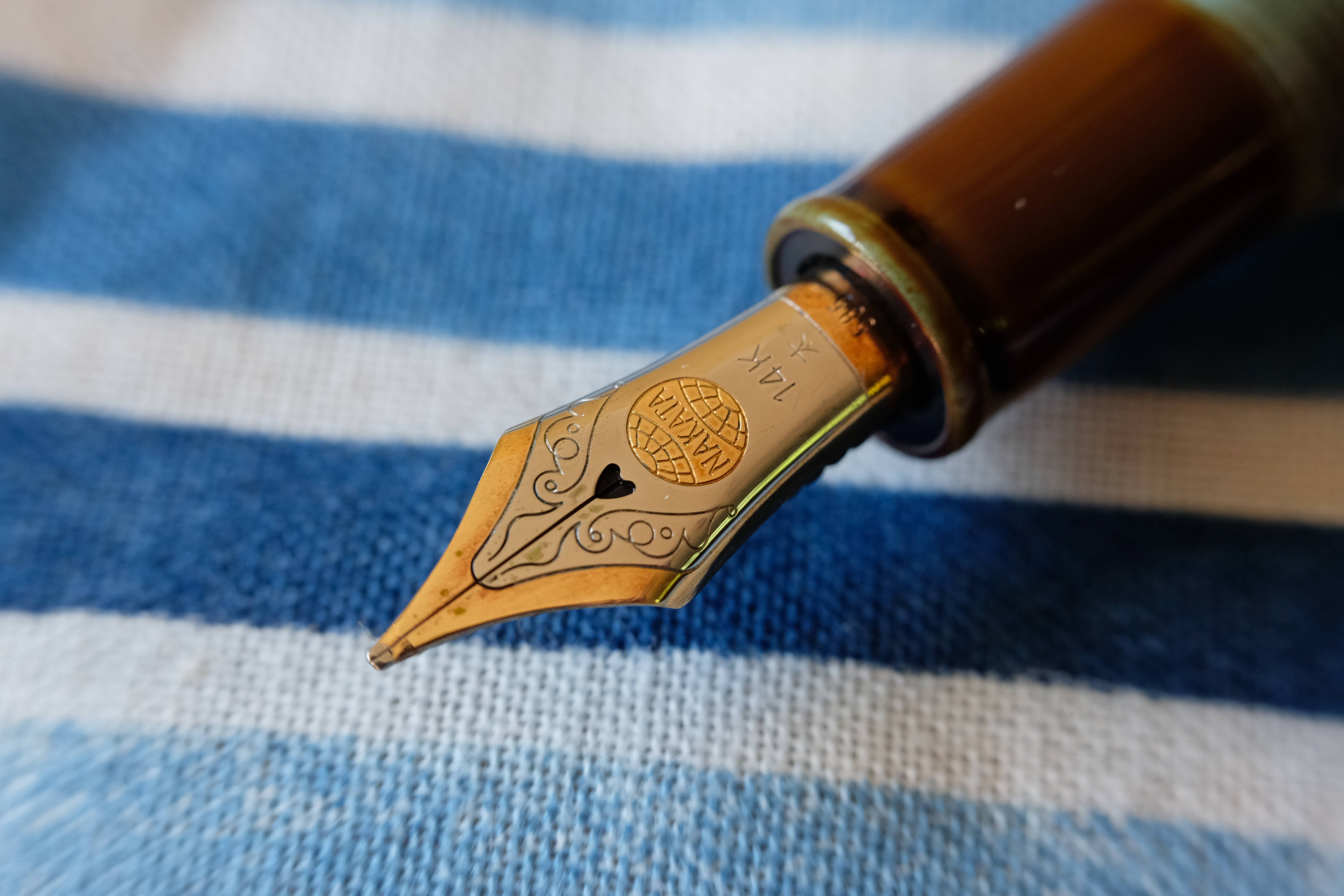
The Decapod shouldn’t be comfortable: it’s a medium-sized pen, but it has a huge step down from the barrel, and the section is fairly short so your fingers unavoidably end up on the threads. But it sits so nicely in the hand that I can use it without issue.
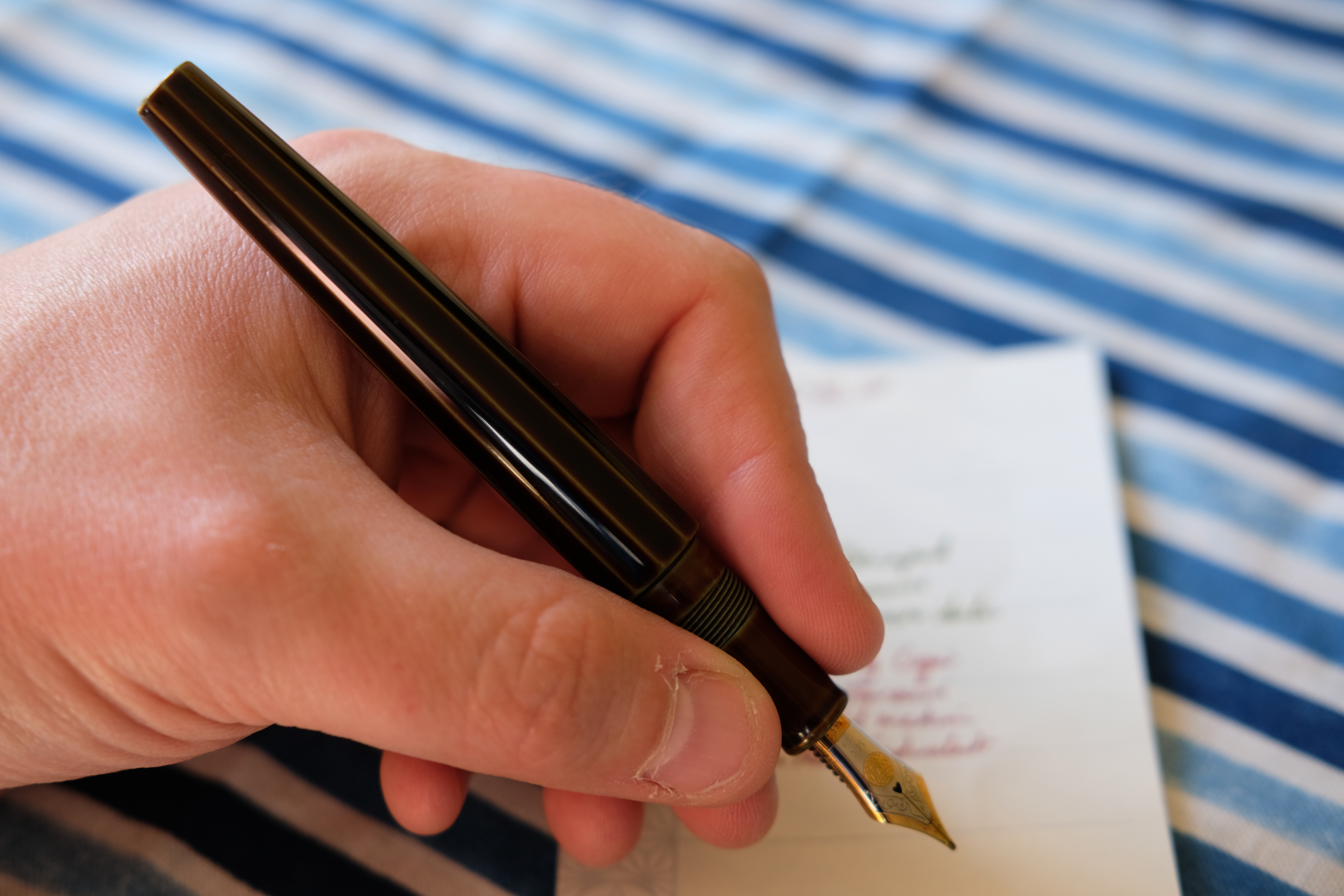
In Japan last month I bought a second Nakaya: this time a Long Cigar (long is the shape, cigar means no clip) in Kuro-Tamenuri, a dark red/black. I picked a stock medium nib, in rose gold.

And I can say that after my experiences I am a complete Nakaya convert.
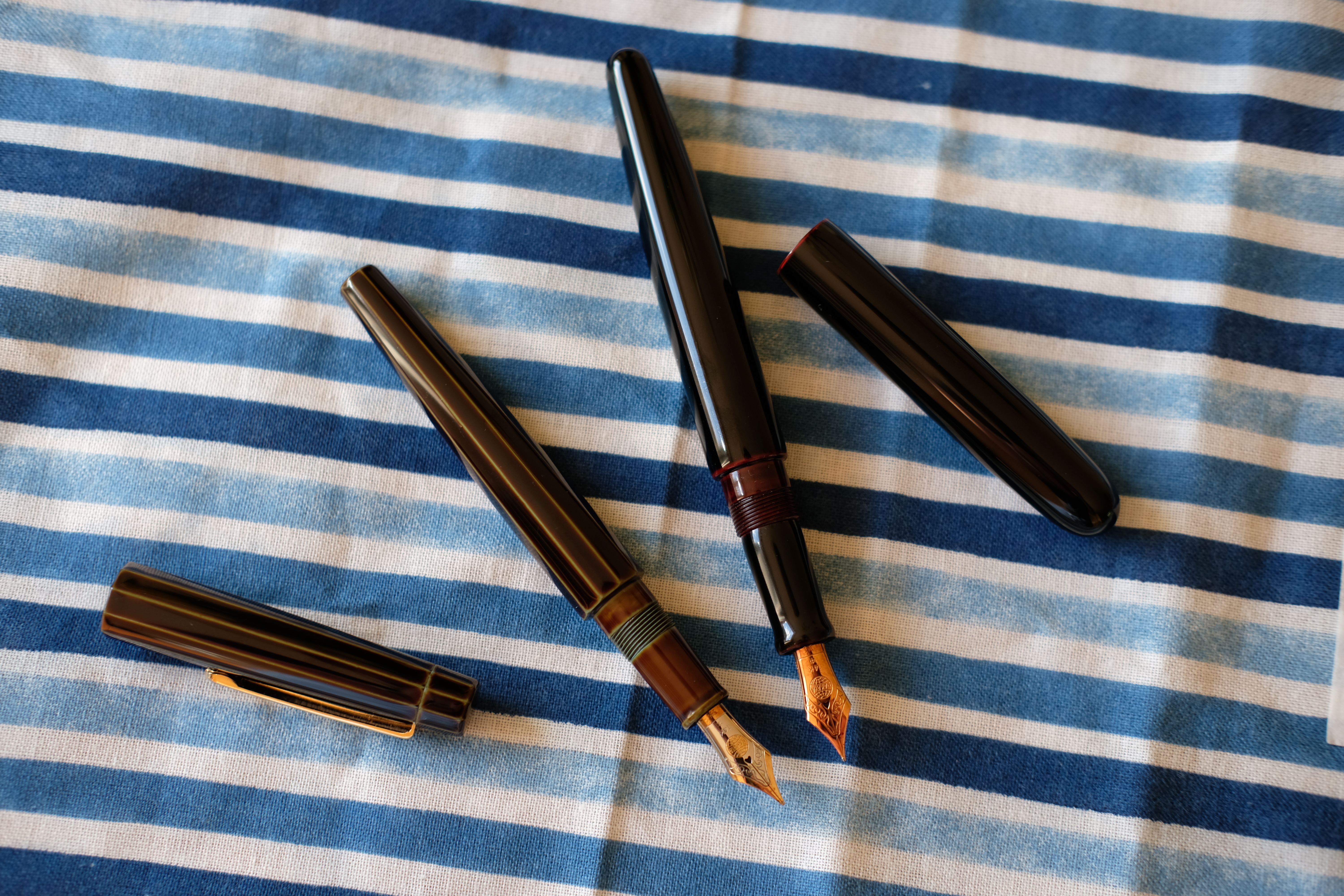
Nakayas, like many Japanese pens, come inside a traditional paulownia wood box. They make a good, thoughtful first impression, not excessive.
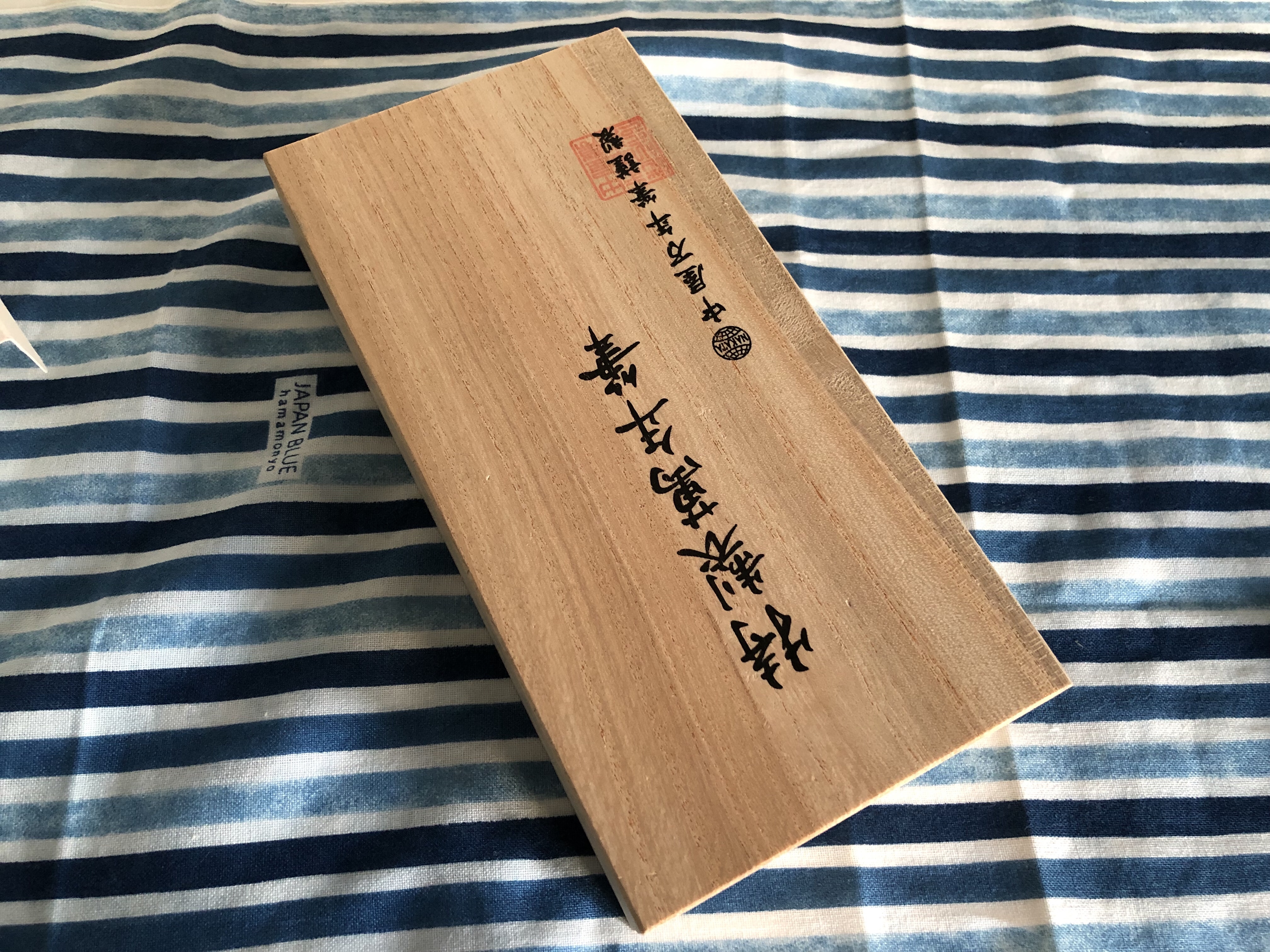
But you also get a little pouch in embroidered silk, sized to the model you chose, to protect your new prize.

Pick up the pens and everything about them adds up to a cohesive writing experience that is distinctive and very organic, humanist even.
It starts with the urushi finish, which on Nakaya pens (unlike say the Platinum Izumo) includes the threads.

The urushi is over Ebonite, so it feels warm and almost soft in the hand from the first moment. The Urushi is very natural, handmade feeling, with curves and some irregularities. The overall experience is very different from the ultra-perfect Namiki Urushi #20.
Because the urushi is over Ebonite, Nakaya pens are very light. You might not expect this given their size. The Long Cigar is longer than a Visconti Opera Master uncapped, as you can see from the size comparison (also including a Montblanc 149 and Lamy 2000).
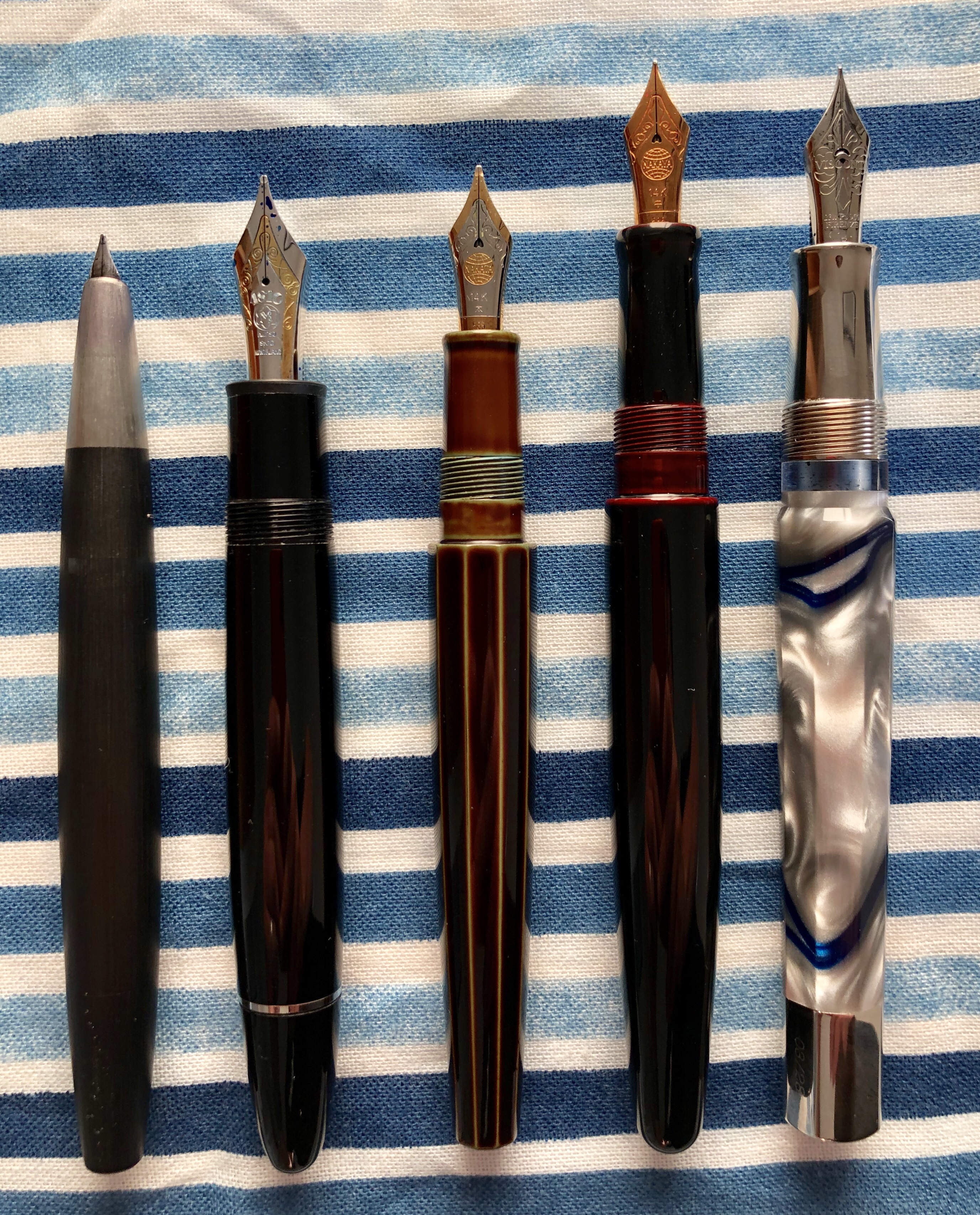
But the Long Cigar’s weight is 20g (the Decapod is 17g), vs 42g for the Opera Master and 23g for the Montblanc 149. This light weight really helps comfort, and you can tell that these are pens for writers. The caps come off quickly, the threads aren’t sharp, and the balance is right in the hand. For what it’s worth, the Long Cigar has pretty much the longest section of any pen I’ve ever used.
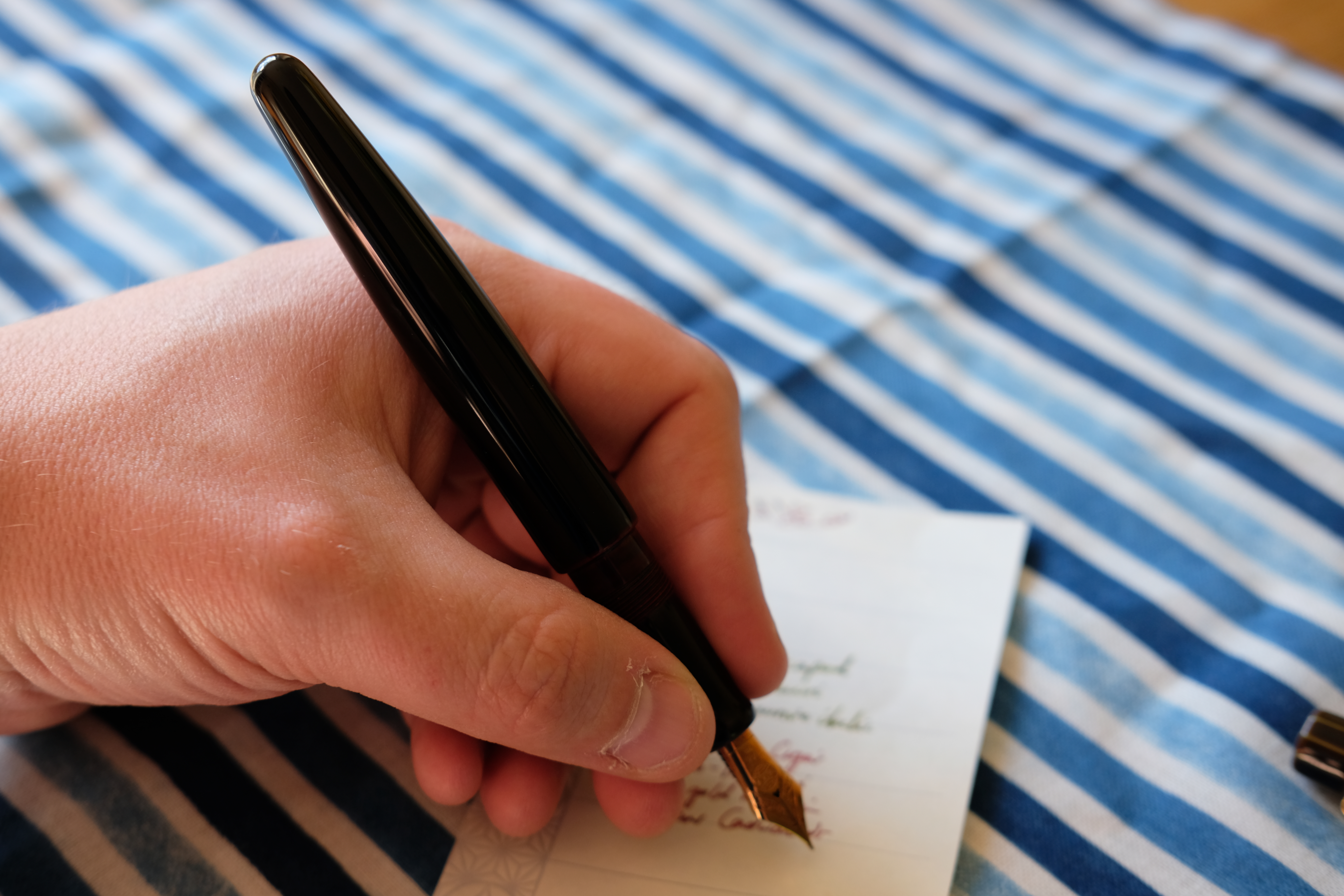
The writing experience itself is precise and tactile. The nibs aren’t particularly wet; they’re crisp and firm and have some feedback. You feel very in control writing with a Nakaya.
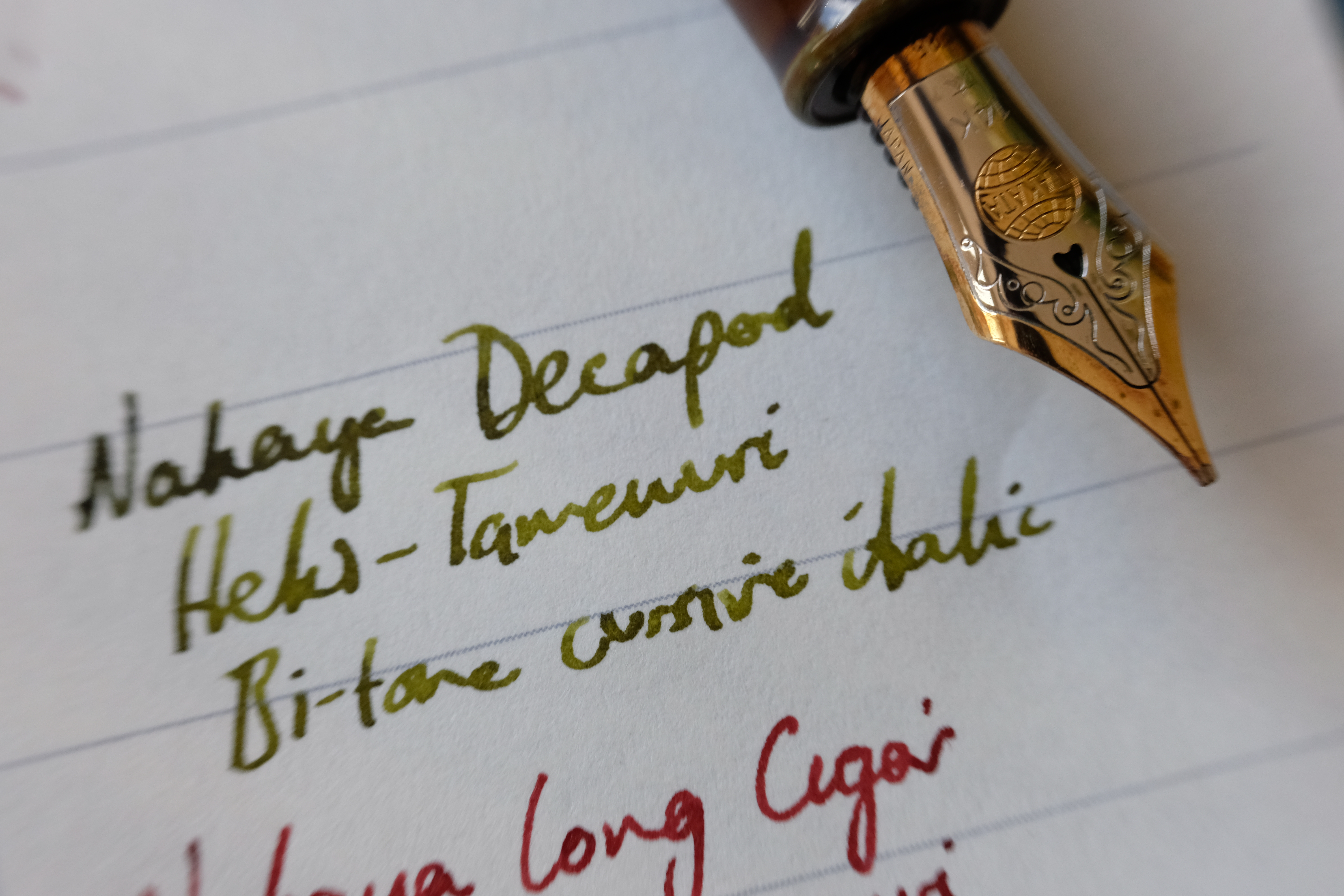
The nibs are very pretty. They’re Platinum nibs, complete with heart-shaped breather hole, but they’re labelled Nakaya / Nakata and have the width in kanji, and the Nakaya globe symbol. The feeds are plastic, but they work just fine.
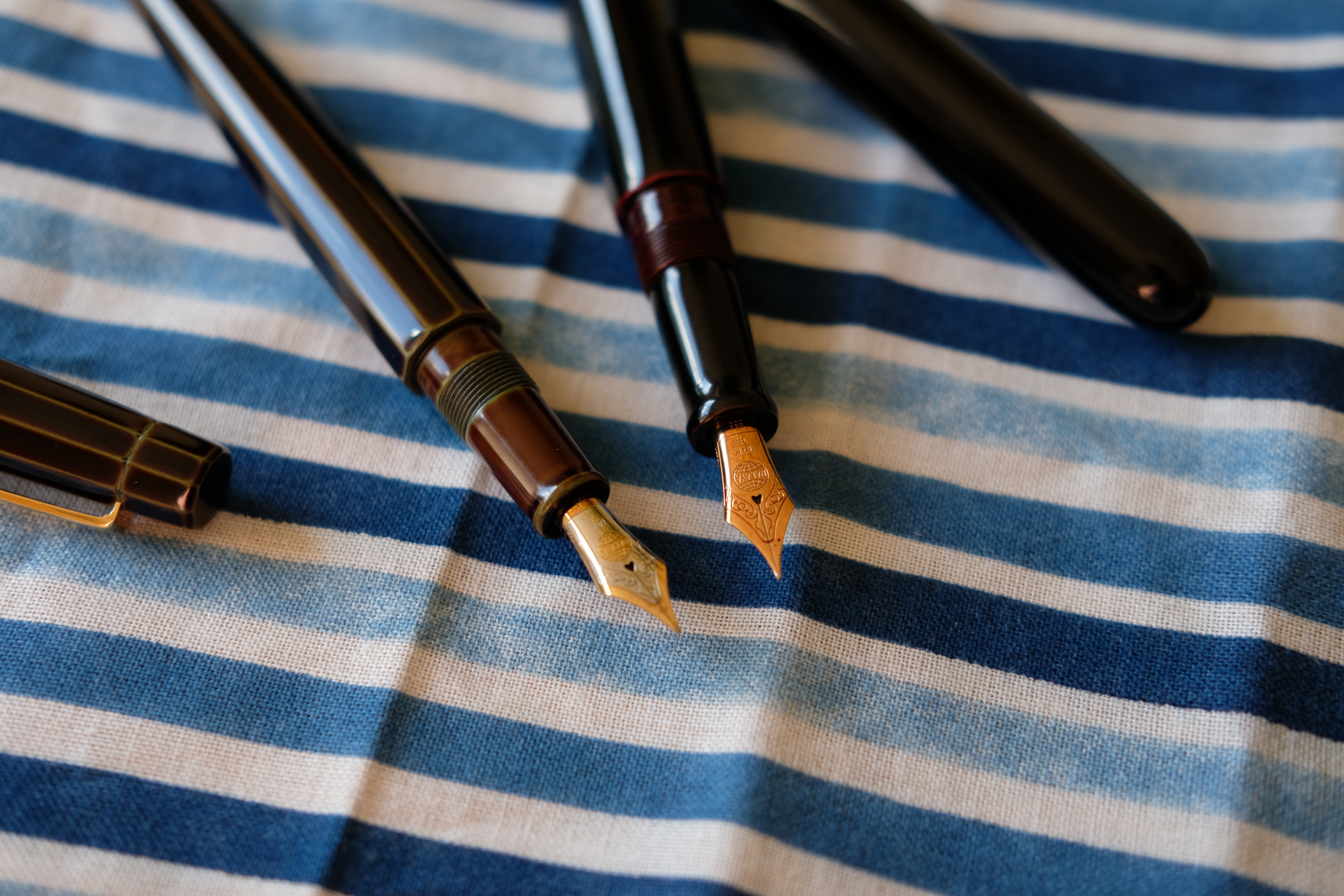
Under the hood, you’ll find the barrel screws off to reveal a Platinum converter. My Decapod has a maki-e decorated converter, which is very pretty. Capacity is not huge, of course, but these aren’t fire-hose nibs.
All of the threads work great and nothing has ever accidentally unscrewed on me.
You’ll pay £500+ for a Nakaya, with some of the decorated special versions going for thousands. If that seems a lot for a cartridge-converter pen with the same basic nib as a Platinum 3776, remember that these are all small-batch pens made using expensive raw materials (Japanese urushi costs a lot), using manual artisan processes that take months.
To me, the degree of care and personal attention evident both in the construction of the pens, and the effort to fit your individual writing style, is incredibly reassuring. When I bought the Long Cigar in Tokyo, the assistant asked me to fill in a page of questions about my personal writing preferences; this will be used if I send my pen in for tweaking, or when I buy another pen, to make sure it fits me perfectly.
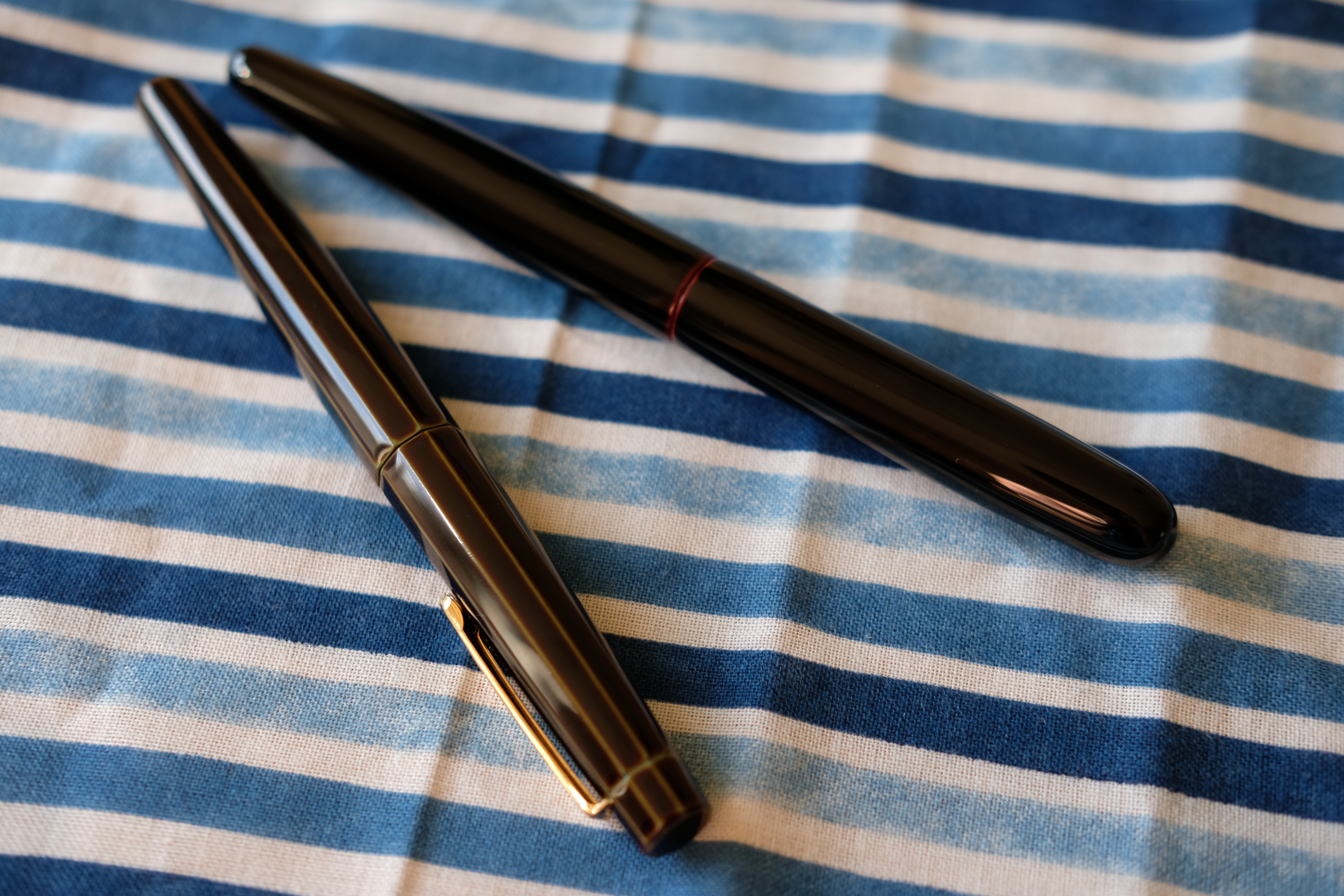
For me, the relationship with my Nakayas is not purely intellectual. I have a fondness for these pens; I baby them more than pens that cost twice as much. I enjoy the artistry they bring into my life.
There really is something special about Nakaya.
Want to read more reviews like this? Please consider supporting the blog:
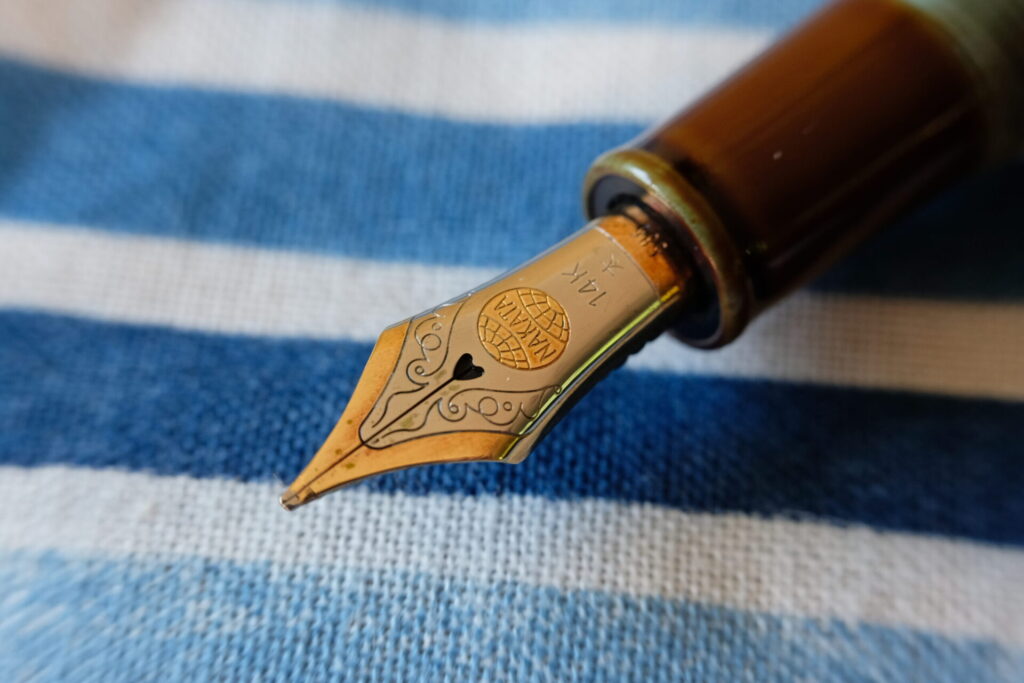

I love Nakayas but it’s the sort of pen you need to try first. A few years back they suffered the same hype that Conid do now with the result that about 6 months later there were a lot of bargains if you know where to look (I couldn’t justify a second – will make an exception for your Decapod Twist 😉 but I know people who did well) . These days it seems we’re back to sensibility.
BTW – what was the price like in Tokyo compared to online or bought/ordered through Sakura Fountain Pen Gallery or Iguana Sell ?
I think I saved about £100 — the long cigar was 65,000 yen. I agree that trying is illuminating… I was not prepared for just how light Nakayas feel. When I first held one for about 30 seconds in a shop, it felt insubstantial. It took a little longer to appreciate the hand-feel.
I loved the writing experience, but the cap threading annoyed me (getting the deca sides out of sync!).
Glad you’re enjoying your Nakayas, the short section on most models put me off until I saw the deskpen, neo-standard and long. I’m waiting for my desk pen which won’t be ready til September-November.
The waiting is the best part 😁
I would argue that the writing is the best part! I, too, am a Nakaya convert, though it wasn’t a far journey, as I have always preferred Japanese pens. With a cursive italic Neo-Standard Writer in Aka-tamenuri and a medium Naka-ai Writer in Sumiko and ruthenium, I’m now looking forward to picking up a Portable Writer with a two-tone nib. Your comments are spot-on – there’s just something about holding these pens, and truly enjoying the writing experience and craftsmanship.
After months of waiting my Dorsal Fin v2 Heki Tamenuri arrived just the other day and it is indeed exquisite. There is a palpable difference in this pen that sets it apart from the others in my modest collection. Great article that helps describe a nearly indescribable pen.
There’s something about Nakayas that’s hard to resist. The craftsmanship and labour that goes into them enhances their appeal hugely. Aside from price, my biggest challenge is settling on a model and a finish as I’ll never be able to afford everything that I might like. 😀
Please, can you tell me what brand and name that green ink is?
It’s gorgeous!